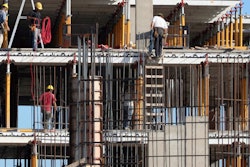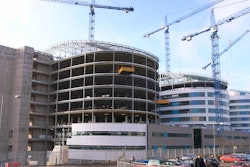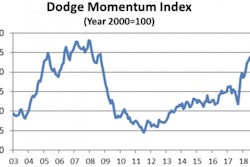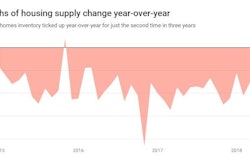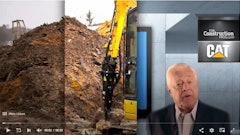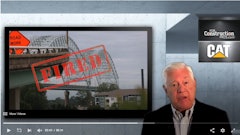Construction News Tracker is presented by Caterpillar and produced by ForConstructionPros.com.
The U.S. Senate has completed action on a so called Minibus Bill. It includes $45 billion from the Highway Trust Fund — which is the FAST Act adopted in 2015 — and another $3.5 billion in money transferred from the general fund. In essence, the Minibus combines four appropriations bills — including transportation, housing and urban development. Among other features of this legislation is inclusion of $1 billion in BUILD grants ,formerly TIGER grants; $17.7 billion in FAA funding; and $750 million in AIP discretionary funds.
After reviewing the June Commerce Department stats on housing, there's widespread speculation the nation's market for new homes is beginning to ease. With inventory shortages noted as home sales fell in June by 12.3%, Freddie Mac says it is alarming that single family construction permit growth has fallen off when millennials are reaching peak age to purchase their first homes. Chief Economist Sam Khater says the imbalance between supply and demand is the reason homes prices continue to rise.
CALTRANS is busy at work restoring roadways around wildfires in northern California that has become the Golden State's largest in history. Despite only 30% containment, CALTRANS says it is necessary for fire crews and support services to have functioning roadways available. The Carr fire has burned 112,000 plus acres and destroyed nearly a thousand buildings around Redding. CALTRANS says State Route 299 is an important highway to fire crews, emergency personnel and utility workers and estimates a bill of nearly $25 million to restore pavement and signage, remove downed trees and replace guardrails as 18 wildfires burn creating one of the worst fire seasons in history.
The Dodge Momentum Index moved to 169.8 level in July, a rise of 1.4% from June on the monthly measure of nonresidential building projects in planning. The commercial construction component rose 3.3% while the institutional component fell 1.5% for the same time frame. The well regarded industry measure has maintained a steady rise since its last slippage in the fall of 2017. Meanwhile, the American Institute of Architects consensus construction forecast panel has a rosy outlook for the balance of this year and next. The organization forecasts nonresidential building to grow 4% the remainder of 2018 and 3.9% for all of 2019. Chief Economist Kermit Baker says the forecast panel is quite optimistic, and if that materialize’s it would result in nine years of consecutive construction growth while total spending on nonresidential buildings would be 5% greater than the last peak year of 2008.
An analysis by AGC of new Labor Department data claims that contractors could be headed for economic peril. While prices for construction inputs fell two-tenths of a percent in July, months of the steep price hikes — 9.5% over the last year — has managed to squeeze out profits as bid costs have not kept pace with reality. And this does not yet factor in the increases of aluminum and steel resulting from the tariff impositions. Ken Simonson, Chief AGC Economisit, says that despite the pause in price hikes in July costs of doing business doubled over the past year for contractors, and they are just now beginning to catch up with bids.
A $1.6 billion construction project to improve Interstate Highway 35W around Fort Worth, Texas, is now complete. Years of work between Dallas and Fort Worth managed to maintain traffic flow in one of the highest traveled corridors in the Longhorn state. Capacity was nearly doubled by 20,000 vehicles daily with reconstructed lanes and new tolling capacity as well. And its not totally finished. Three connectors are still in construction including one that manages traffic flow to busy DFW Airport.
A nearly 2,000-foot-long tunnel for a light rail system has broken through under Bellevue, Washington. The Sound Transit System expansion will expand the light rail from downtown Seattle to downtown Bellevue and part of Redmond with 10 stations. Guy Atkinson, construction of Renton, is working with a $133 million contract. Crews used a sequential excavation method as opposed to a boring machine for the work which required sophisticated monitoring of ground conditions. The process keeps workers immersed on the 27-foot 10-inch deep, 33-foot wide tunnel continuously removing 72,000 cubic yards of dirt. Completion is expected in 2021.
Finally, everyone has peak performance potential. You just need to know where they're coming from and meet them there.
This is Construction News Tracker looking over the industry that makes the world a better place, presented by Caterpillar and produced by ForConstructionPros.com.
Follow us on social media at Facebook as the streaming Web never ends.




